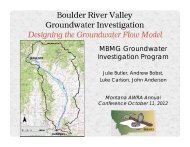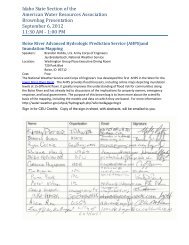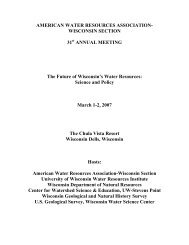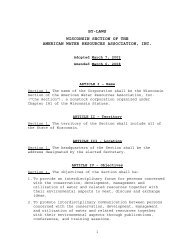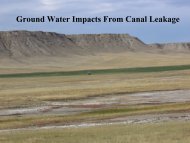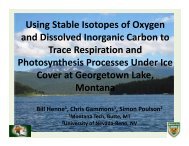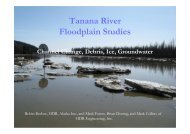Wisconsin's Role in Great Lakes Restoration - American Water ...
Wisconsin's Role in Great Lakes Restoration - American Water ...
Wisconsin's Role in Great Lakes Restoration - American Water ...
You also want an ePaper? Increase the reach of your titles
YUMPU automatically turns print PDFs into web optimized ePapers that Google loves.
Us<strong>in</strong>g Heated Distributed Temperature Sens<strong>in</strong>g to Monitor Soil <strong>Water</strong><br />
**Arlen M. Striegl, Department of Civil and Environmental Eng<strong>in</strong>eer<strong>in</strong>g, University of<br />
Wiscons<strong>in</strong> – Madison, Madison, WI striegl@wisc.edu<br />
Steven P. Loheide II, Department of Civil and Environmental Eng<strong>in</strong>eer<strong>in</strong>g, University of<br />
Wiscons<strong>in</strong> – Madison, Madison, WI loheide@cae.wisc.edu<br />
Department of Civil and Environmental Eng<strong>in</strong>eer<strong>in</strong>g, University of Wiscons<strong>in</strong> – Madison,<br />
Madison, WI<br />
Vadose zone hydrology varies both spatially and temporally and is a primary factor govern<strong>in</strong>g<br />
vegetation composition and pattern<strong>in</strong>g. Understand<strong>in</strong>g site soil water dynamics is critical for<br />
hydrologic model development, parameterization, and calibration. Soil water heterogeneity<br />
and transience is difficult to capture us<strong>in</strong>g traditional measurement techniques.<br />
When embedded <strong>in</strong> soil, commercially available s<strong>in</strong>gle needle heat dissipation sensors have<br />
been used to measure soil water by <strong>in</strong>troduc<strong>in</strong>g a heat pulse <strong>in</strong>to the soil and monitor<strong>in</strong>g the<br />
<strong>in</strong>duced temperature response. Wet soils exhibit a more muted temperature response<br />
because of their superior ability to conduct heat away from the needle as compared to dry<br />
soils. Distributed temperature sens<strong>in</strong>g (DTS) systems, which are also commercially available,<br />
are capable of measur<strong>in</strong>g temperatures at two meter <strong>in</strong>tervals along fiber optic cables up to<br />
30km long. By comb<strong>in</strong><strong>in</strong>g DTS with heat dissipation sensor methodology, we propose that soil<br />
water can be monitored over large distributed scales previously unatta<strong>in</strong>able. Numerical<br />
simulations guided the design and fabrication of a custom bundle of fiber optics, resistance<br />
heat<strong>in</strong>g conductors, and protective coat<strong>in</strong>gs. This custom cable was buried at a depth of<br />
20cm to monitor the soil water dynamics of a floodpla<strong>in</strong> transect near the Upper East Branch<br />
Pecatonica River south of Barneveld, Wiscons<strong>in</strong>. The temperature response of the cable was<br />
empirically related to co-located standard soil water measurements. Accurate and reliable<br />
spatially distributed, temporally cont<strong>in</strong>uous measurements of soil water are now be<strong>in</strong>g<br />
obta<strong>in</strong>ed us<strong>in</strong>g this technology.<br />
** Graduate student presentation<br />
15






